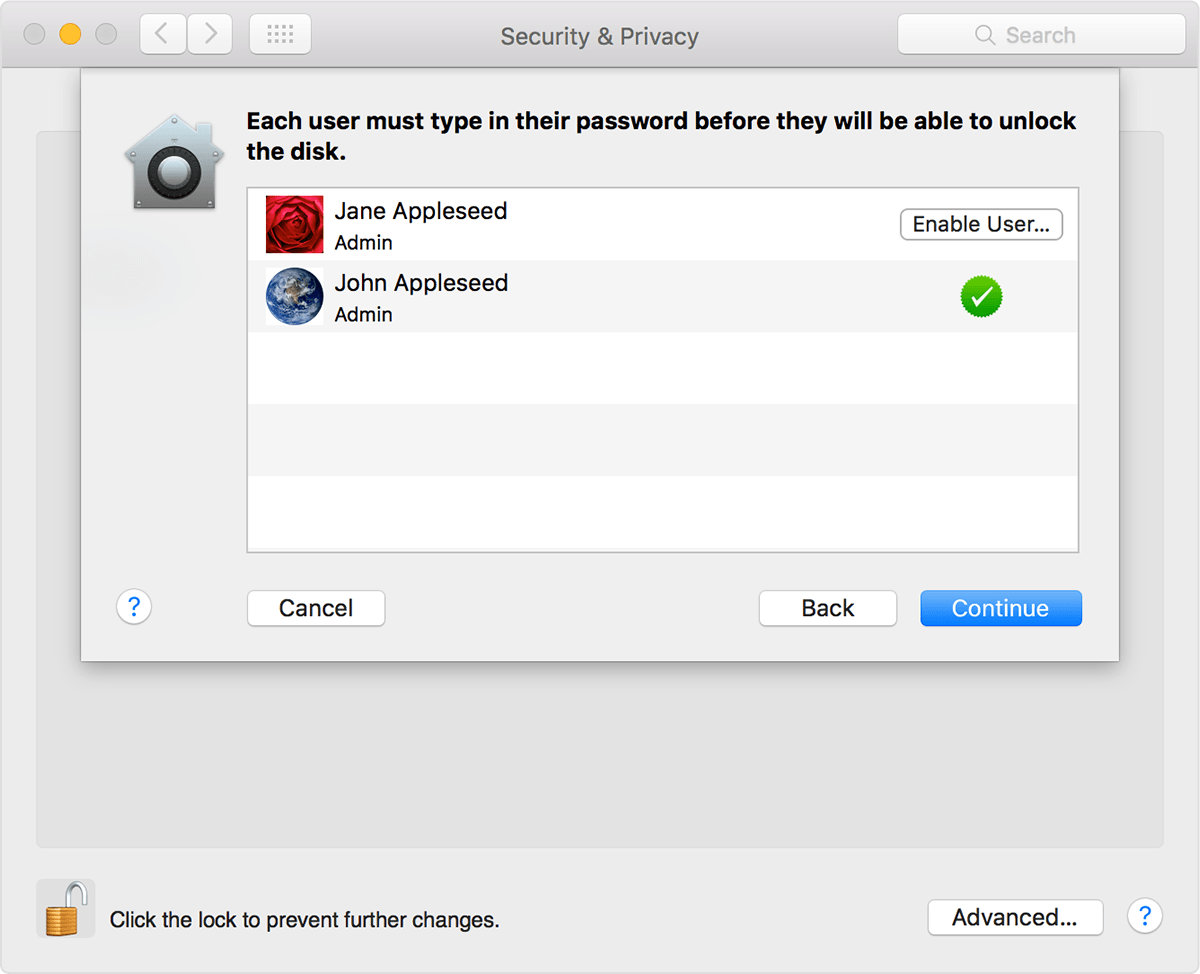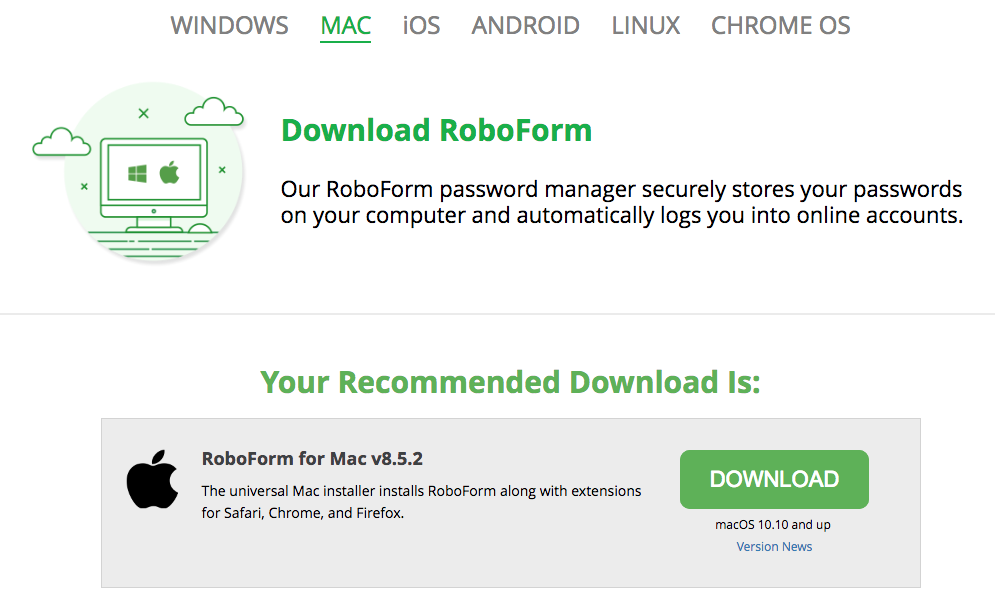After incorrectly entering a user password three times at the Mac login screen, a message appears saying “If you forgot your password, you can reset it using your Apple ID”, click the arrow button to bring up a “Reset Password” dialog; Enter the Apple ID login information that is tied to the Mac OS X user account and click “Reset Password”.
The password of your macOS user account is also known as your login password. It's the password that you use to log in to your Mac and make certain changes, such as installing software.
- Oct 05, 2018 Reset Forgotten Admin Password on macOS Mojave and macOS Sierra October 5, 2018 108 Comments The passwords for all accounts on macOS Mojave 10.14, macOS Sierra, OSX 10.11 El Capitan, OSX 10.10 Yosemite, OSX 10.9 Mavericks and OSX 10.8 Mountain Lion including admin and standard user accounts can be reset and changed when booted from the Recovery.
- Jun 26, 2009 A dmg file is a compressed file structure, capable of containing folders, files, etc. Dmg files can be used for a variety of purposes, from encrypting a home directory (ie – FileVault) to encrypting a file structure manually. A dmg file can be encrypted fairly simply. From Disk Utility, create a dmg.
Change your password
If you know your password and can use it to log in to your account, you can change your password in Users & Groups preferences:
- Choose System Preferences from the Apple menu, then click Users & Groups.
- Select your user name from the list of users.
- Click the Change Password button, then follow the onscreen instructions.
Reset your password
If you don't remember your password, or it isn't working, you might be able to reset it using one of the methods described below. But first try these simpler solutions:
- Make sure that you're typing the correct uppercase or lowercase characters. If your keyboard has Caps Lock turned on, the password field shows a Caps Lock symbol .
- If the password field shows a question mark, click it to display a password hint that might help you to remember.
- Try to log in without a password. If that works, you can then add a password by following the steps to change your password.
- Try to log in with the Apple ID password that you use for iCloud. If you just changed that password and the new password isn't working, try the old password first. If that works, you should be able to use the new password from then on.
Reset using your Apple ID
In some macOS versions, you can use your Apple ID to reset your login password. At the login screen, keep entering a password until you see a message saying that you can reset your password using Apple ID. If you don't see the message after three attempts, your account isn't set up to allow resetting with Apple ID.
- Click next to the Apple ID message, then follow the onscreen instructions to enter your Apple ID and create a new password. You'll be asked to restart when done.
- Log in with your new password.
- Determine whether to create a new login keychain.
Reset using another admin account
If you know the name and password of an admin account on your Mac, you can use that account to reset the password.
- Log in with the name and password of the other admin account.
- Choose System Preferences from the Apple menu, then click Users & Groups.
- Click , then enter the admin name and password again.
- Select your user name from the list of users.
- Click the Reset Password button, then follow the onscreen instructions to create a new password:
- Choose Log Out from the Apple menu.
- Log in to your account using your new password.
- Determine whether to create a new login keychain.

Reset using the Reset Password assistant (FileVault must be on)
If FileVault is turned on, you might be able to reset your password using the Reset Password assistant:
- Wait up to a minute at the login screen, until you see a message saying that you can use the power button on your Mac to shut down and start up again in Recovery OS. If you don't see this message, FileVault isn't on.
- Press and hold the power button until your Mac turns off.
- Press the power button again to turn on your Mac.
- When the Reset Password window appears, follow the onscreen instructions to create a new password.
If you need to connect to Wi-Fi, move your pointer to the top of the screen and use the Wi-Fi menu to connect. To exit without resetting your password, choose Apple menu > Restart. - When done, click Restart.
- If you were able to reset your password with the Reset Password assistant, log in to your account using your new password.
- Determine whether to create a new login keychain.
Reset using your Recovery Key (FileVault must be on)
If FileVault is turned on and you have a FileVault Recovery Key, you can use that key to reset your password.
- At the login screen, keep entering a password until you see a message saying that you can reset your password using your Recovery Key. If you don't see the message after three attempts, FileVault isn't on.
- Click next to the message. The password field changes to a Recovery Key field.
- Enter your Recovery Key. Use uppercase characters, and include the hyphens.
- Follow the onscreen instructions to create a new password, then click Reset Password when done.
- Determine whether to create a new login keychain.
If you can't log in with your new password after restarting your Mac, take these additional steps:
- Restart again, then immediately hold down Command-R or one of the other macOS Recovery key combinations until you see the Apple logo or a spinning globe.
- When you see the macOS Utilities window, choose Utilities > Terminal from the menu bar.
- In the Terminal window, type
resetpassword, then press Return to open the Reset Password assistant pictured above. - Select ”My password doesn't work when logging in,” then click Next and follow the onscreen instructions for your user account.
Create a new login keychain, if necessary
After resetting your password and logging back in to your account, you might see an alert that the system was unable to unlock your login keychain. This is expected, because the passwords for your user account and login keychain no longer match. Just click the Create New Keychain button in the alert.
If you didn't see an alert about your login keychain, or you see other messages asking for your old password, reset your keychain manually:
- Open Keychain Access, which is in the Utilities folder of your Applications folder.
- Choose Preferences from the Keychain Access menu, then click the Reset My Default Keychain button in the preferences window. After you enter your new password, Keychain Access creates an empty login keychain with no password. Click OK to confirm.
If you don't see a Reset My Default keychain button, close the preferences window and select the “login” keychain from the left side of the Keychain Access window. Press the Delete key, then click Delete References. - Choose Log Out from the Apple menu to return to the login screen.
- Log in to your account using your new password. Your account password and login keychain password now match again.
If you still can't log in
If you still can't log in with your password, contact Apple Support for help.
DMG files are containers for apps in macOS, from which you can install software fast. Installing software simply requires you to open the .dmg file and then drag the application to your Mac’s Application folder. That’s much easier than using an Install Wizard in Windows. However, some of Mac newbies have no idea how to mount .dmg files in macOS or for some reason the .dmg file cannot be opened. Now this page will show you three methods to open and mount .dmg files on macOS.
Method 1: Open .dmg file with DiskImageMounter
DiskImageMounter is the utility that handles mounting disk images in Mac OS X. Normally you can mount a .dmg file on Mac by simply double-clicking it or right-clicking on it and selecting Open With > DiskImageMounter (default). However, some people report that .dmg files cannot be opened on Mac in this way. If that’s the case, move on to another method.
Method 2: Mount .dmg file from Mac OS Terminal

Place the .dmg file on your Mac’s desktop and then follow the steps.
Step 1: Open Terminal on your Mac. If Terminal is not on the Dock, open it from Finder > Applications > Utilities.
Step 2: Type cd ~/Desktop and press Enter key.
Step 3: Type hdiutil attach googlechrome.dmg and press Enter key. Replace googlechrome with your .dmg file name.
Forgot Dmg Password Mac Pro
That’s it. After you execute the two command lines, the .dmg file will be mounted on your Mac. How to download silverlight on mac.
Forgot Password On Mac Computer
Method 3: Mount .dmg file using iSumsoft Bitlocker Reader for Mac
If you cannot open .dmg files on your Mac using either of the first two methods, it’s a good idea to use a third-party utility like iSumsoft Bitlocker Reader for Mac. iSumsoft Bitlocker Reader for Mac is mainly to help unlock BitLocker-encrypted drive on Mac, but it also comes with the Attach feature that can attach disk image on Mac. Here are the simple steps you can take to mount .dmg file using iSumsoft Bitlocker Reader for Mac.
Step 1: Download and install iSumsoft Bitlocker Reader for Mac on your Mac computer. After the installation is complete, launch it from the Launchpad.
Step 2: Click the Attach button.
Step 3: Browse for the .dmg file and select it, and then click Open.
7 zip download mac version. Jun 11, 2018 7-Zip is designed for creating or unpacking archived and compressed files. The application can unpack 7zip, ZIP, CAB, RAR, ARJ, GZIP, BZIP2, TAR, CPIO, RPM and DEB files, or create file archives in those formats. Download 7 Zip 2018 Filehippo: 7 Zip is a free and increasingly popular File compression Software with the highest compression rate of generated files (in its own 7z format). Available as 7 Zip 2018 Beta version 2018 and 7 Zip 2018 Offline Installer 2018. P7zip is the command line version of 7-Zip for Linux / Unix, made by an independent developer. Some unofficial p7zip packages for Linux and other systems: p7zip for Debian (and Ubuntu). 7 Zip 7 Zip is an utility program to help you draw out compressed documents as well as produce your own compressed files in several various layouts. With these devices you can conveniently send big quantities of information or open compressed files you get without inconvenience. This program can take care of multiple compression formats. 7-Zip works in Windows 10 / 8 / 7 / Vista / XP / 2016 / 2012 / 2008 / 2003 / 2000 / NT. P7zip - the port of the command line version of 7-Zip to Linux/Posix. On 7-Zip's SourceForge Page you can find a forum, bug reports, and feature request systems. Compression ratio. We compared 7-Zip with WinRAR 5.20.
Download sql server for macbook. That’s it. The .dmg file is now mounted successfully on your Mac and you can open it. You can also click the Unmount button to unmount the disk image from your Mac if you want.
Related Articles
- >Fix 'The disk you inserted was not readable by this computer' on Mac
- How to Access/Read BitLocker Encrypted USB Drive on Mac
- I Forgot My Mac Computer Password, What Should I Do?